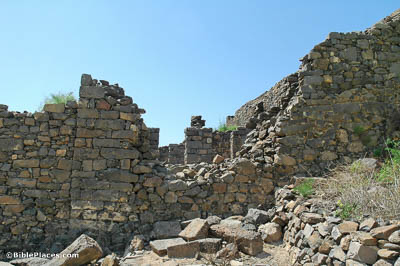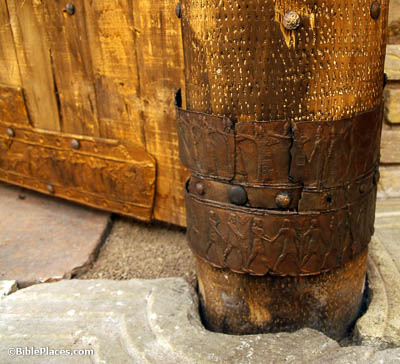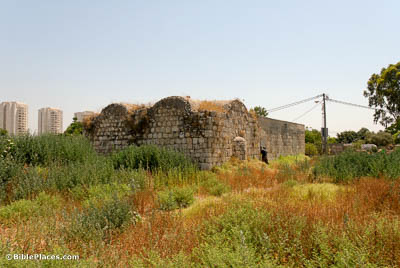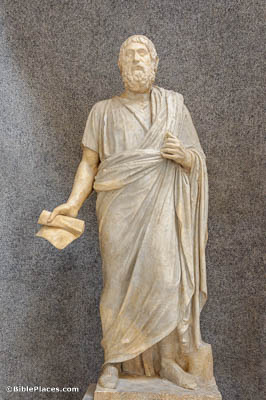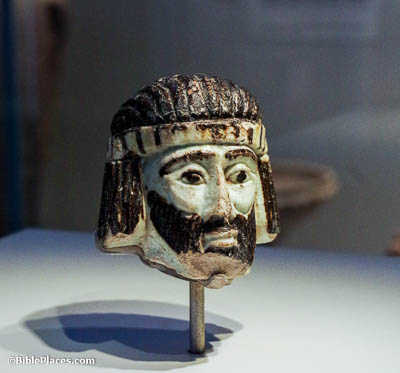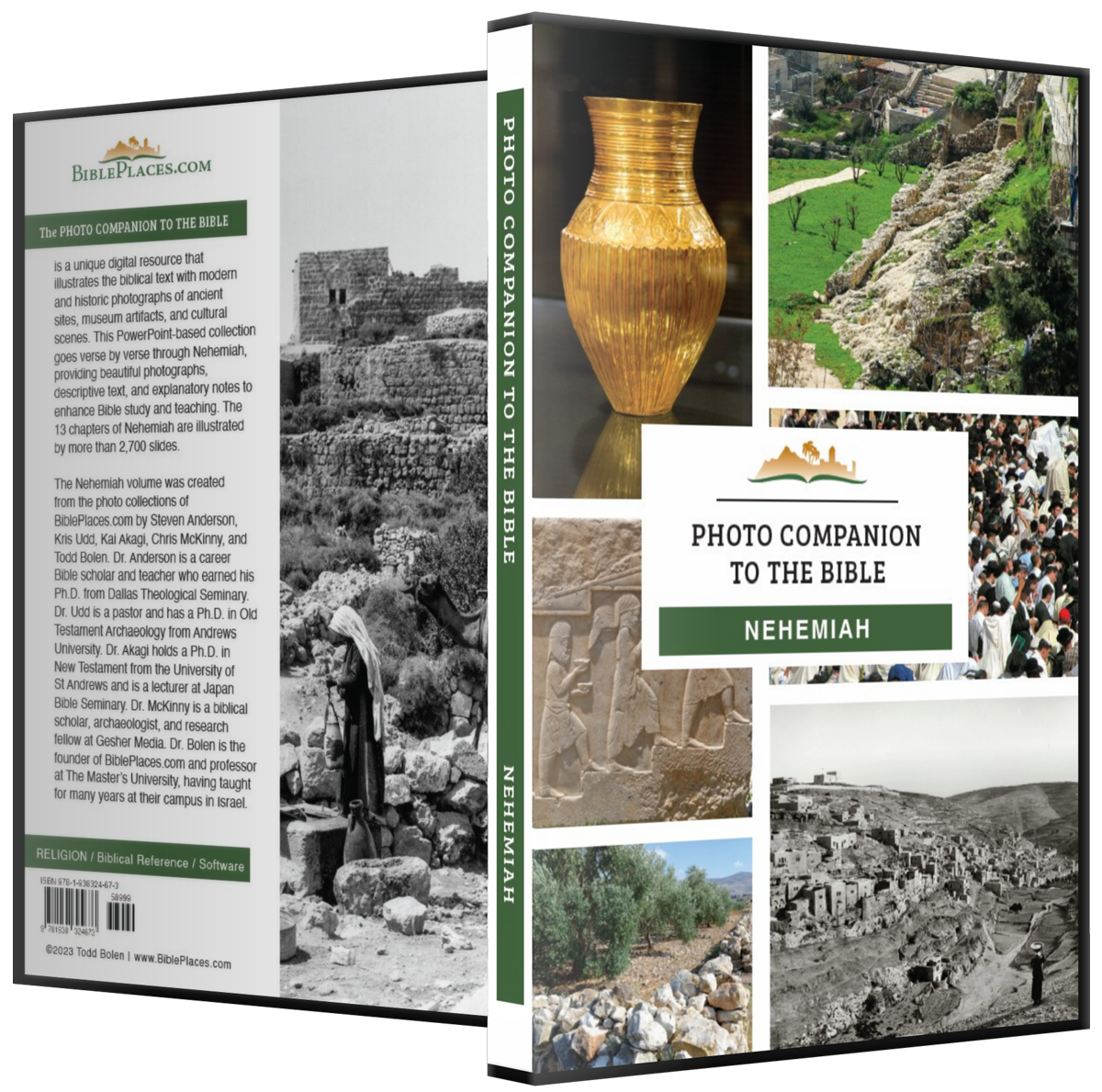They said, “Come, let us meet together in one of the villages in the plain of Ono” (Nehemiah 6:2).
The plain (or “valley”) of Ono is named after the town of Ono, which is mentioned in 1 Chronicles 8:12, Ezra 2:33, and Nehemiah 7:37 and 11:35. Those references show that Ono is situated close to the better-known city of Lod (Lydda) on the coastal plain (Shephelah). This area was on the border between the Persian provinces of Judah, Samaria, and Ashdod, which made it an ideal place to suggest a meeting between rival regional governors. This picture shows an old mosque at Kefar Ana, which has been identified as Ono.
